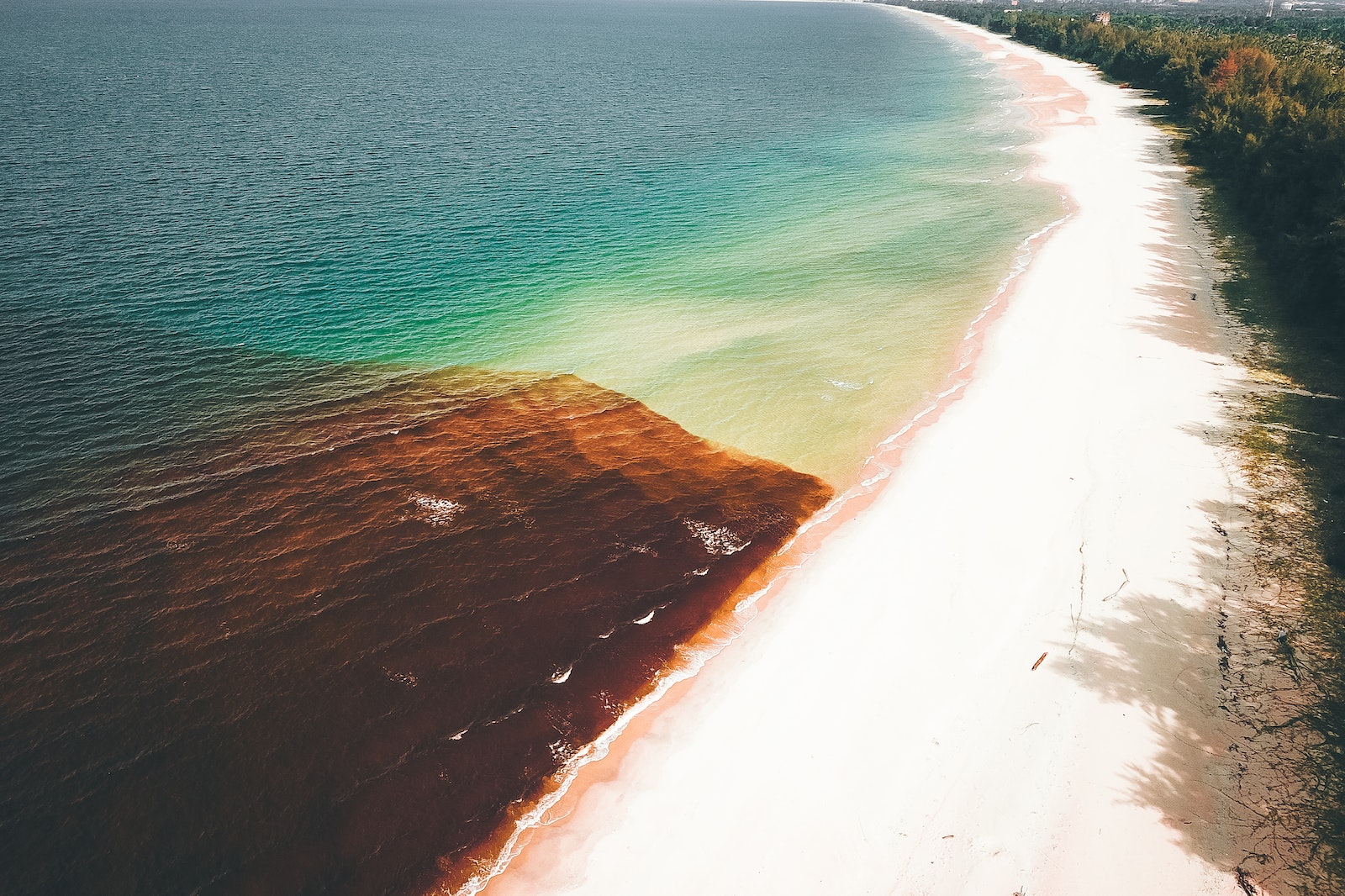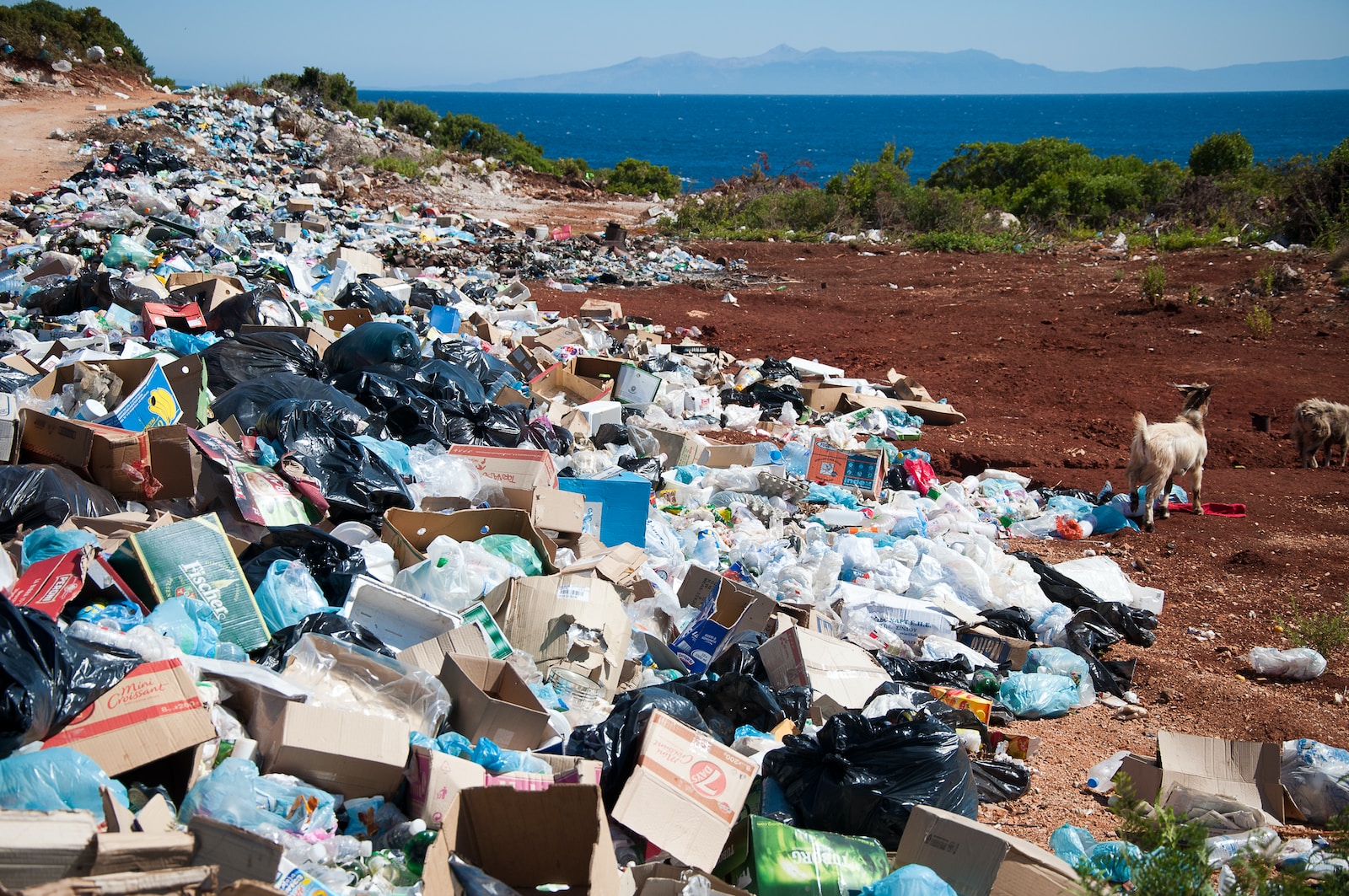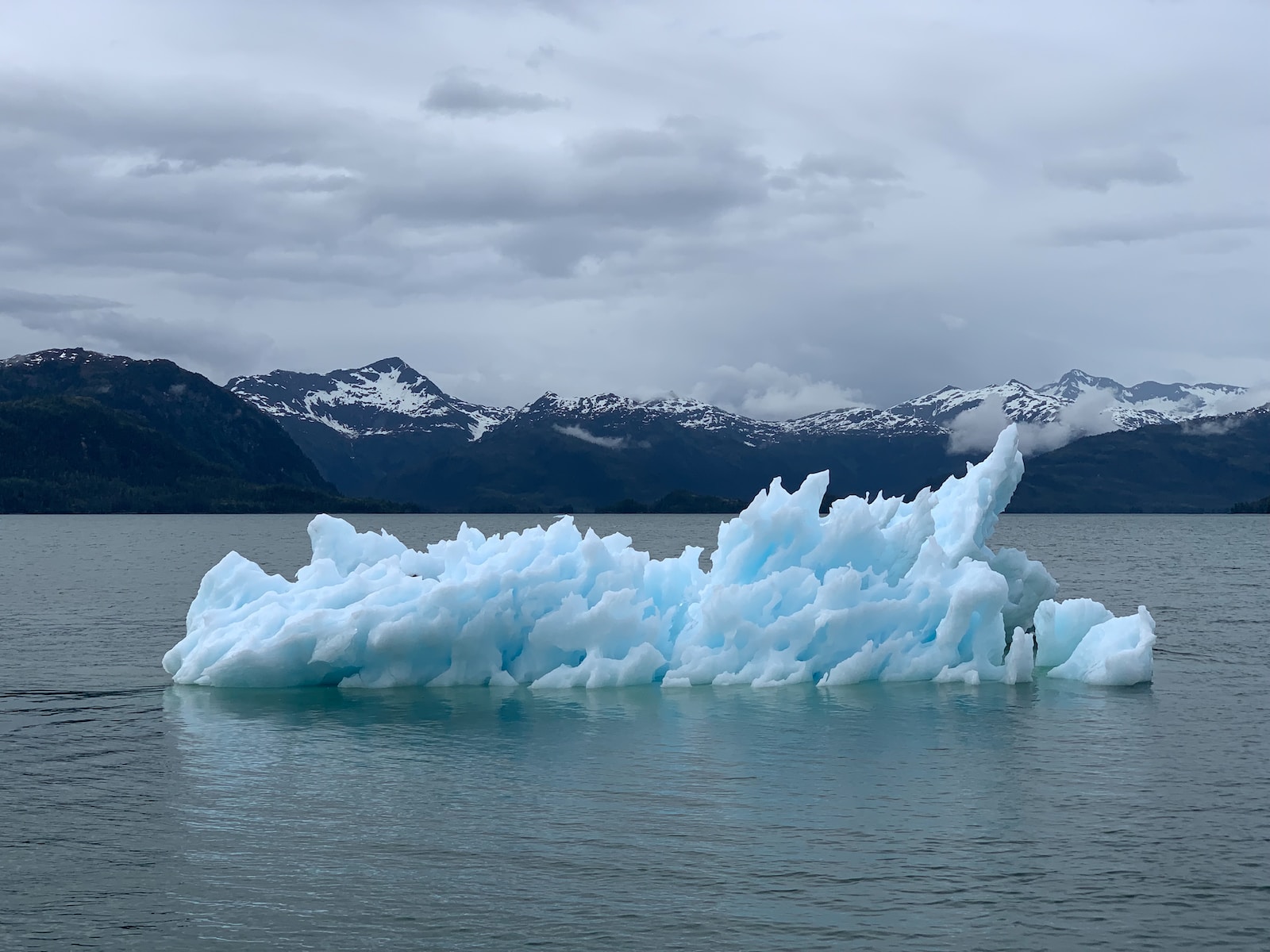Introduction: The Ocean’s Colorful Phenomena
A Voyage Into the Underwater Sunsets
Our planet, Earth, resplendent with myriad wonders, harbors an array of fascinating phenomena in its bosom. Peel back the opaque veil of our terrestrial experience and plunge into the enigmatic realm of marine biology.
Here, beneath the swirling cerulean waves, a world untouched by ultraviolet rays thrives in phosphorescent allure. From iridescent corals hosting technicolor fish to the celestial dance of bioluminescent creatures, this underwater panorama provides a visual spectacle that rivals even the most vivid terrestrial landscapes.
The Incandescent Riddles: Algal Blooms and Red Tides
Among this aquatic cornucopia exists two riveting occurrences: algal blooms and red tides – nature’s own expressionist paintings etched across her watery canvas. They might have graced your local news channel or perhaps you’ve seen them during coastal vacations – these sudden explosions of color that transform serene sea surfaces into psychedelic displays or ominous crimson waves. Both beautiful and baffling, these biological events stir curiosity in observers and scientists alike; they serve as vibrant reminders of our planet’s dynamic character and offer tantalizing puzzles for those willing to delve deeper.
Intrigued? Excellent!
Because we’re about to set sail on a remarkable journey exploring these aquatic marvels – their origins, causes, types, impact on marine life and how they relate to one another. Welcome aboard!
Algal Blooms: Nature’s Underwater Fireworks
The Magic of Algal Blooms: A Simple Explanation
If you’ve ever skimmed across the surface of a lake overrun with green sludge, or perhaps witnessed an ethereal glow in ocean waters at night, then you’ve had the distinct pleasure of encountering algal blooms. Simply put, algal blooms are dense clusters of tiny aquatic plants known as algae. Much like trees in a forest, these photosynthetic organisms multiply rapidly under favorable conditions and proliferate into visible masses that can drastically alter the water’s appearance.
Unearthing the Root Causes: Triggers and Catalysts of Algal Blooms
So how do these tiny specks manage to form such grand spectacles? The answer lies in two key factors: nutrients and weather conditions.
Algae adore nutrients—specifically nitrogen and phosphorus—contained within fertilizers that often wash into bodies of water. When nutrient levels spike due to runoff from farmland or sewage treatment plants, algae seize this buffet opportunity and grow at astonishing rates.
Nutrient Overload: What Happens When There’s Too Much Of A Good Thing?
While we typically appreciate abundance, when it comes to nutrients in our waters, less is indeed more. Excess nutrients can create eutrophic conditions—a fancy way of saying overly enriched waters—that foster rampant algal growth.
The result? Thick blankets of algae that limit sunlight penetration for other aquatic life forms – a phenomenon known as an algal bloom.
The Weather’s Role: When Mother Nature Plays a Hand
Besides nutrient abundance, weather conditions also play substantial roles in algal bloom formation. Warm temperatures combined with calm seas create an ideal nursery for algae. Further helping their cause are heavy rainfalls washing additional land-sourced nutrients into water bodies while prolonged sunshine enhances photosynthesis.
Understanding the Water Quality Parameters
As we delve into the causes and conditions that lead to algal blooms and red tides, it’s crucial to consider the water quality parameters that are often associated with these phenomena. The table below provides a snapshot of commonly observed or recommended ranges for various water quality indicators in areas where algal blooms and red tides are prevalent. These parameters—such as pH, temperature, and dissolved oxygen levels—play a significant role in the formation and impact of these marine events. By comparing these conditions, we can gain further insights into what makes each phenomenon unique and how they might be related.”
| Parameter | Algal Blooms | Red Tides |
|---|---|---|
| pH | 6.5 – 9.0 | 6.0 – 9.0 |
| Temperature (°C) | 15 – 30 | 18 – 28 |
| Turbidity (NTU) | > 5 | > 3 |
| Dissolved Oxygen (mg/L) | 4 – 15 | 2 – 10 |
| Conductivity (µS/cm) | Variable | Variable |
- pH: Both algal blooms and red tides tend to occur in waters with a pH range of 6.0 to 9.0. However, algal blooms are generally more common in waters with a pH of 6.5 to 9.0.
- Temperature: Algal blooms are more prevalent in warmer waters with temperatures ranging from 15°C to 30°C, while red tides commonly occur in waters with temperatures between 18°C and 28°C.
- Turbidity: Higher turbidity levels are often associated with algal blooms. A turbidity level greater than 5 NTU is generally considered conducive for algal blooms, while for red tides, the level is generally above 3 NTU.
- Dissolved Oxygen: Algal blooms tend to occur in waters with dissolved oxygen levels ranging from 4 to 15 mg/L. Red tides are commonly found in waters with dissolved oxygen levels between 2 and 10 mg/L.
- Conductivity: Conductivity can vary significantly depending on the specific conditions and types of algal blooms or red tides. Therefore, it is labeled as “Variable” in this table.
A Spectrum Of Algae Blooms: Not All Are Created Equal
In the world beneath our waves, there exists a vast array of algal blooms differentiated by their species composition and impact on ecosystems. Some are harmless—even beneficial—providing food for myriad marine species while others produce toxins detrimental to both marine life and humans alike.
The Good And The Bad :
Harmless algal blooms are primarily composed of non-toxic phytoplankton types which form the base layer in marine food chains supporting diverse fauna from microscopic zooplankton to majestic whales. However, harmful ones—aptly named Harmful Algae Blooms (HABs)—can wreak havoc on ecosystems by producing potent toxins causing illnesses like shellfish poisoning or neurotoxicity if consumed by humans or marine animals.
Spotlight On Bioluminescent Blooms : A Light Show Underwater
Last but not least among these aquatic phenomena are bioluminescent blooms – nature’s way of adding dazzle to our dark oceans! Certain microscopic organisms such as dinoflagellates emit light when agitated as part of their defense mechanism resulting in surreal blue glows adorning waves at night – truly one spectacle worth witnessing!
Red Tides: The Ocean’s Crimson Waves
The Enigma of Red Tides: Defining the Phenomenon
As we immerse ourselves in the cerulean depths of our conversation, let’s attempt to demystify a particularly puzzling phenomenon — red tides. These aren’t your run-of-the-mill algal blooms.
Rather, they are a very specific type of algal bloom characterized by the conspicuous scarlet hue they lend to oceanic waters. Red tides occur when colonies of algae — usually certain species of dinoflagellates — proliferate at an exponential rate.
Crimson Catalysts: Causes Behind Red Tides
The genesis behind these crimson waves is quite fascinating. Like their less-colourful counterparts, red tides are spawned by an overabundance of nutrients in aquatic environs; however, it is their association with dinoflagellates that sets them apart and adds the rouge undertone to our narrative.
Dinoflagellates: Microscopic Maestros Behind Red Tides
Dinoflagellates are whip-tailed unicellular organisms that happen to be prodigious producers of pigments. In conditions ripe for blooming — warm waters teeming with nutrients — these microscopic maestros orchestrate an underwater spectacle that could rival any terrestrial firework show. However, this spectacle often has a dark side.
A Domino Effect: The Role of Environmental Factors
The inception and perpetuation of red tides involve a complex chain reaction akin to falling dominoes. It starts with nutrient pollution from agricultural runoff or sewage discharges entering marine habitats. When serendipitously combined with conducive weather patterns and sea temperatures, it creates an ideal nursery for these dinoflagellates to multiply unchecked.
Types of Red Tides: A Spectrum From Subtle To Sultry
A common misconception among maritime enthusiasts is assuming all red tides are alike. However, just as stars differ in magnitude and galaxies vary in structure, red tides too exist along a spectrum – ranging from benign blooms causing subtle discolorations to harmful ones rendering waters toxic.
Harmful vs Non-Harmful: Distinguishing Between Dangerous and Benign Red Tides
While some red tides amount to nothing more than harmless watercolor washes on the ocean canvas, others can be perilous for marine life and humans alike due largely to bio-toxins produced during such blooms. Harmless ones may cause no more calamity than bewilderment among beachgoers whilst their harmful counterparts can cause aquatic die-offs and even disrupt human activities like fishing or swimming when toxins enter food chains or become aerosolized respectively.
The Enigmatic Intersection Between Algal Blooms and Red Tides: Two Sides Of The Same Coin?
Unraveling the complexities of our oceanic world, one might wonder if algal blooms and red tides are simply two sides of the same coin. Indeed, they do share similarities but also bear substantive differences.
They are both phenomena caused by microscopic organisms in the ocean, often triggered by similar environmental conditions such as nutrient overload and favorable weather conditions. More so, they both have the ability to cause harm or be merely an aesthetic spectacle depending on their type.
Intricacies Amidst Similarities: A Comparison and Contrast
However, upon closer examination, we unearth distinct differences between these two phenomena. You see, while all red tides can be classified as a type of algal bloom (specifically harmful ones), not all algal blooms result in red tides. The color variations seen in algal blooms depend on the species of phytoplankton involved.
Red tides predominantly occur due to a specific type of phytoplankton known as dinoflagellates. They’re notorious for their toxin-producing capabilities which lead to detrimental effects on marine life and humans alike.
The Common Thread: Forging a Path Towards Understanding
This exploration underscores a commonality that bolsters our understanding of these marine phenomena – they are both products of delicate ecosystems that can dramatically change under certain conditions. They serve as vivid reminders of nature’s power and sensitivity, mirrored beneath the ocean surface.
Conclusion: Riding The Wave Of Knowledge
As we navigate this sea of knowledge about algal blooms and red tides, it becomes apparent that these mysterious underwater spectacles represent nature’s paradox – stunning yet potentially harmful. Our understanding is continually evolving; each discovery marking another beacon in our pursuit to comprehend the vast oceans’ enigmatic beauty fully.
By deciphering these natural occurrences’ intricate patterns, we stride towards preserving marine ecosystems and ensuring their sustenance for future generations to marvel at. So here’s to unearthing more secrets from beneath those undulating waves – may each ripple bring newfound knowledge!
 Skip to main content
Skip to main content


